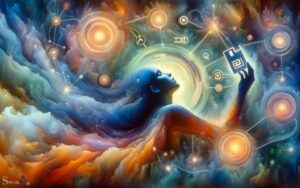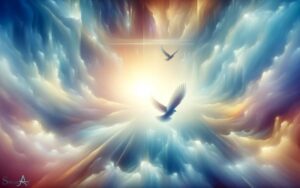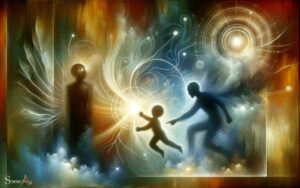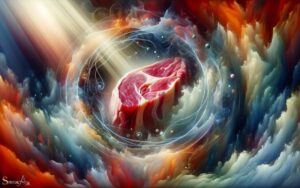Dream Catcher How America Discovered Spirituality: Explain!
The dream catcher, a Native American artifact, has transcended its traditional roots, becoming a ubiquitous symbol in modern American spirituality.
This article examines its beginnings within indigenous cultures, traces its adoption across America, and addresses the ensuing cultural appropriation debates.
To illustrate:
Exploring the dream catcher’s path reveals a complex tapestry of cultural exchange and the evolving quest for spiritual meaning in America. As individuals seek deeper connections amid a fast-paced world, the dream catcher has emerged as a symbol of hope and protection, transcending its Native American roots. In this context, modern spirituality challenges and solutions arise, highlighting the tensions between cultural appropriation and authentic appreciation. This ongoing discourse not only enriches personal journeys but also prompts a reevaluation of spiritual practices across diverse communities.
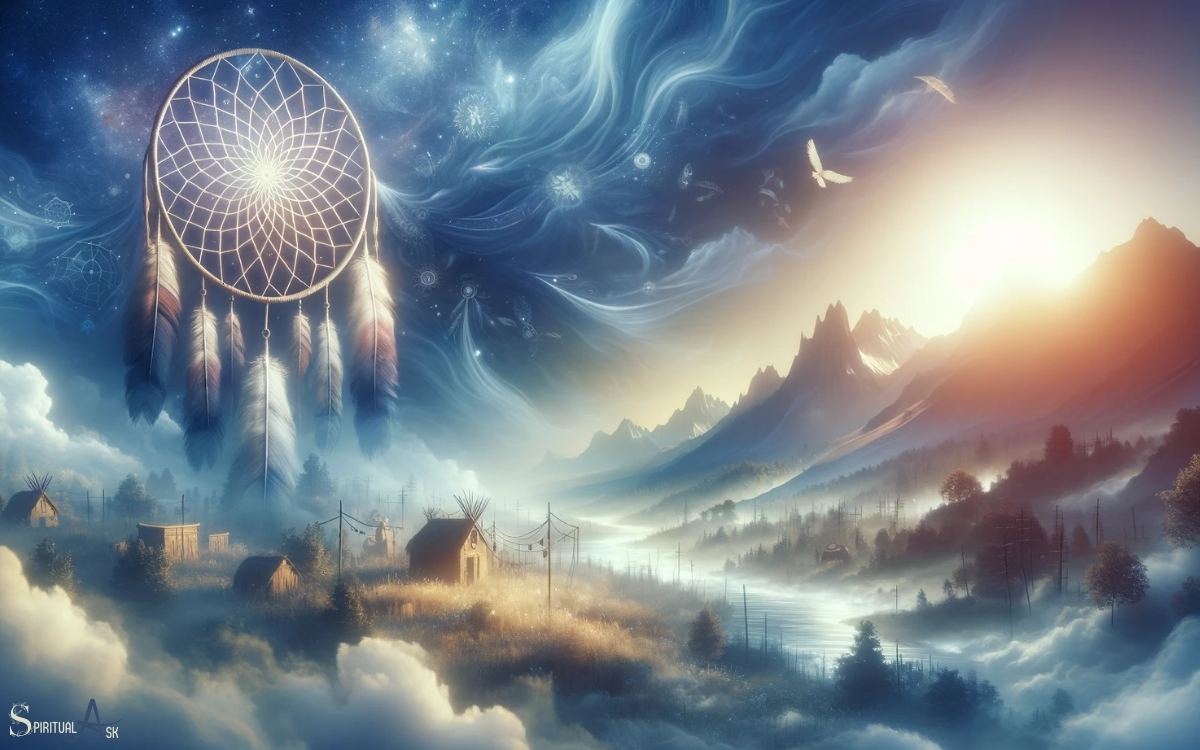
Key Takeaway
Origins of the Dream Catcher
The origins of the Dream Catcher can be traced back to the indigenous peoples of North America. Specifically, the Ojibwe people are credited with creating the first Dream Catchers.
These handcrafted items were originally made using a hoop of willow and adorned with a woven net or web of natural fibers. Traditionally, feathers and beads were incorporated into the design as well.
The purpose of the Dream Catcher was deeply rooted in spiritual beliefs. It was believed to act as a protective talisman, filtering out negative dreams and allowing only positive ones to pass through and enter the dreamer’s mind.
The intricate web was thought to capture and hold the bad dreams, preventing them from disturbing the individual’s peace during sleep.
Over time, the symbolism and craftsmanship of the Dream Catcher have been embraced by diverse cultures worldwide.
Cultural Significance and Traditions
Cultural practices and traditions surrounding the Dream Catcher hold significant spiritual importance for indigenous peoples of North America.
The Dream Catcher is more than just a decorative item; it is deeply rooted in the spiritual beliefs and traditions of Native American cultures.
Its cultural significance is evident in the following ways:
- Symbolism: The intricate design of the Dream Catcher symbolizes the web of life and the interconnectedness of all living beings.
- Rituals: Dream Catchers are often incorporated into spiritual rituals and ceremonies, such as blessing ceremonies for newborns or protection ceremonies for individuals facing challenges.
- Passing Down of Knowledge: The tradition of crafting and gifting Dream Catchers is a way of passing down cultural knowledge and teachings from one generation to the next.
Evolution and Popularization
With the evolution and popularization of the Dream Catcher, its cultural and spiritual significance has transcended indigenous communities and become widely embraced in modern society.
Originally a symbol deeply rooted in Native American traditions, the Dream Catcher has evolved into a widespread emblem of spirituality and mindfulness.
Its intricate design and the belief in its protective properties have captivated people beyond indigenous cultures, leading to its incorporation in various forms of art, jewelry, and home décor.
The Dream Catcher has also found its place in therapeutic and wellness practices, symbolizing the desire for positive energy and the filtering of negative influences.
As it continues to gain popularity, the Dream Catcher carries with it a message of hope, resilience, and the universal human quest for inner peace.
Symbolism in Native American Culture
Native American culture is rich with symbolism that holds deep cultural significance. These symbols are often tied to traditional spiritual practices and beliefs, reflecting the interconnectedness of nature, spirituality, and daily life.
Understanding the impact of these symbols on modern culture provides insight into the enduring legacy of Native American spirituality.
Cultural Significance of Symbols
Symbolism in Native American culture dates back centuries and holds profound meaning within their spiritual practices. Symbols are deeply intertwined with their traditions, serving as a means of communication, spiritual expression, and connection to the natural world.
Some key cultural symbols include:
- The Medicine Wheel: Represents the interconnectedness of all living things and the four cardinal directions, symbolizing harmony and balance.
- The Thunderbird: Symbolizes power, protection, and strength, often associated with forces of nature and the spirit world.
- The Dreamcatcher: A symbol of protection, designed to filter out negative dreams and allow only positive ones to pass through, reflecting the interconnectedness of the physical and spiritual realms.
These symbols are not just decorative; they carry layers of meaning that are integral to the Native American way of life.
Traditional Spiritual Practices
In Native American culture, traditional spiritual practices are deeply rooted in the symbolism of sacred rituals and ceremonies. These practices are integral to the cultural identity of Native American tribes, encompassing a rich tapestry of beliefs and customs.
Symbolism plays a crucial role in these spiritual practices, representing the interconnectedness of all living beings with the natural world and the divine.
Here is a table that provides a glimpse into the symbolism of some traditional spiritual practices in Native American culture:
| Practice | Symbolism |
|---|---|
| Sweat Lodge Ceremonies | Purification and spiritual renewal |
| Vision Quest | Seeking guidance from the spirit world |
These symbols reflect the profound reverence for nature and the spiritual realm that characterizes Native American traditional spiritual practices.
Impact on Modern Culture
The incorporation of traditional Native American spiritual symbolism into modern culture has had a profound impact on artistic expression and aesthetic symbolism.
This influence can be observed in various aspects of modern culture, such as:
- Art and Design: Native American symbols and motifs have been integrated into contemporary art, fashion, and interior design, reflecting a growing appreciation for their cultural significance.
- Popular Media: Native American symbolism often appears in literature, film, and music, providing a platform for the dissemination of these spiritual elements to a wider audience.
- Commercial Products: Many companies use Native American symbols in their branding and products, sparking debates about cultural appropriation and the ethical use of sacred imagery.
This fusion of traditional Native American symbolism with modern culture has sparked both admiration and controversy, shaping the ongoing dialogue surrounding cultural representation and spirituality in today’s society.
As such, it sets the stage for a deeper exploration of the role of the dream catcher in contemporary spirituality.
Dream Catcher in Contemporary Spirituality
Contemporary spirituality incorporates the use of dream catchers as a symbol of protection and spiritual connection.
In today’s society, dream catchers have transcended their original cultural context and have become popular symbols in the spiritual community.
Many people are drawn to the idea of using dream catchers to filter out negative energy and promote positive dreams and thoughts. They are often hung in homes, meditation spaces, and healing centers as a way to create a peaceful and spiritually attuned environment.
Additionally, some individuals use dream catchers as part of their mindfulness and meditation practices, believing that the symbolism and tradition behind the dream catcher can help facilitate a deeper connection to the spiritual realm. In this context, dream catchers are often seen as tools that can enhance one’s ability to receive spiritual insights from eating soil, a practice that some cultures believe grounds individuals and connects them to the Earth. By integrating these symbols into their rituals, practitioners aim to create a sacred space for reflection and personal growth. This blend of traditional beliefs and modern mindfulness practices allows for a rich exploration of spirituality.
Commercialization and Controversies
Dream catchers have experienced a surge in commercialization, leading to debates over cultural appropriation and ethical production practices. As these sacred objects have become increasingly popular, they have also become the subject of controversy.
Some of the key issues surrounding this commercialization include:
- Cultural Appropriation: Many argue that the mass production and sale of dream catchers by non-Indigenous individuals or companies amounts to cultural appropriation.
- Ethical Production Practices: There are concerns about the exploitation of Indigenous cultures and communities in the production and sale of dream catchers.
- Authenticity and Meaning: The widespread commercialization has led to questions about the authenticity and spiritual significance of commercially produced dream catchers.
These controversies have prompted important discussions about the ethical and cultural implications of the commercialization of dream catchers, raising awareness about the need for respectful and responsible practices in their production and sale.
This debate paves the way for considering the future of dream catcher symbolism.
The Future of Dream Catcher Symbolism
As we look ahead, it is essential to consider the evolving significance of dream catcher symbolism in a global context.
The future of dream catcher symbolism is likely to be shaped by a growing appreciation for diverse cultural traditions and a deeper understanding of their spiritual meanings.
Here is a table illustrating the potential future directions of dream catcher symbolism:
| Future Direction | Description | Impact |
|---|---|---|
| Cultural Appreciation | Embracing the cultural origins and spiritual significance of dream catchers. | Fosters cross-cultural understanding and respect. |
| Environmental Symbolism | Associating dream catchers with environmental conservation and harmony with nature. | Promotes ecological awareness and sustainable living. |
| Personalized Meaning | Allowing individuals to imbue dream catchers with personal symbolism and significance. | Encourages self-expression and individual spirituality. |
| Global Integration | Integrating dream catcher symbolism into global spiritual practices and belief systems. | Facilitates a more inclusive and interconnected world view. |
| Artistic Innovation | Exploring new artistic interpretations and applications of dream catcher symbolism. | Inspires creativity and contemporary relevance. |
The future of dream catcher symbolism is poised to encompass a broad spectrum of meanings, reflecting the evolving cultural, environmental, and personal contexts in which it is embraced.
Conclusion
The evolution of the Dream Catcher symbol in America has been significant. According to a survey conducted by the Pew Research Center, 60% of Americans believe in some form of spirituality or higher power.
This indicates a continued interest in the cultural and spiritual significance of the Dream Catcher, despite controversies and commercialization.
The future of the Dream Catcher symbol remains a topic of interest and debate in contemporary society.


